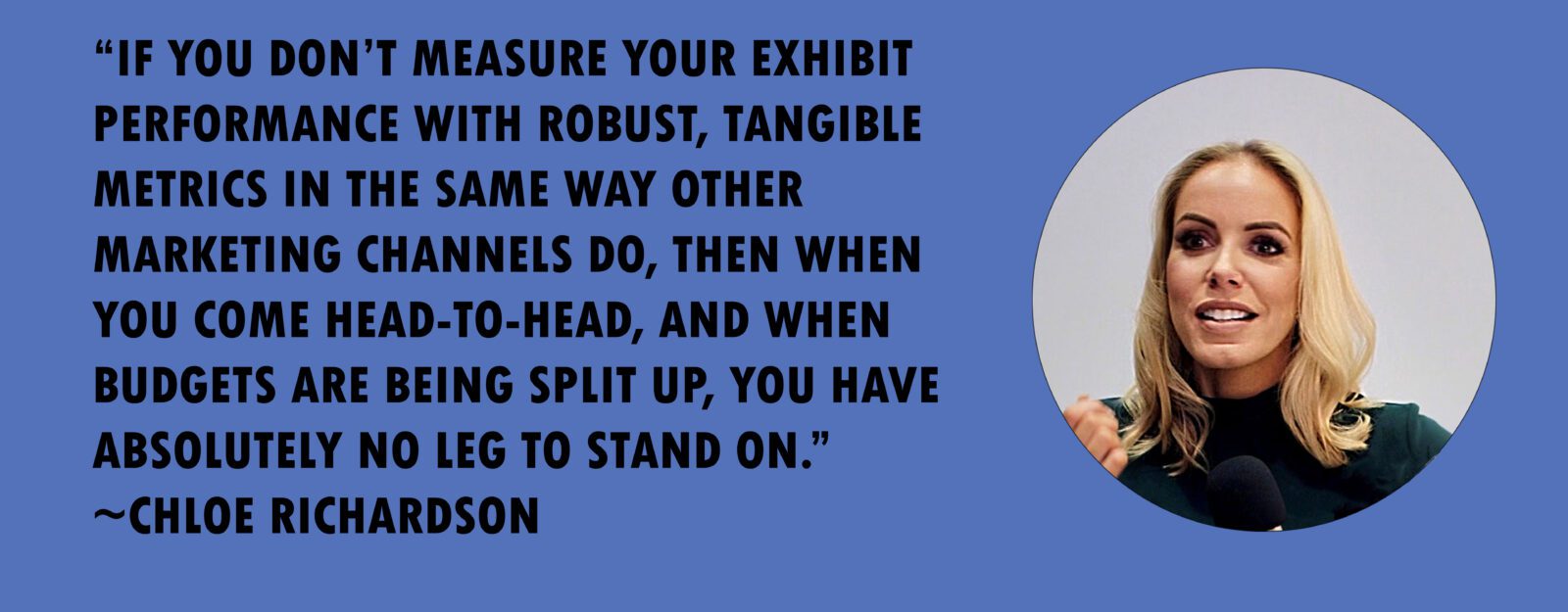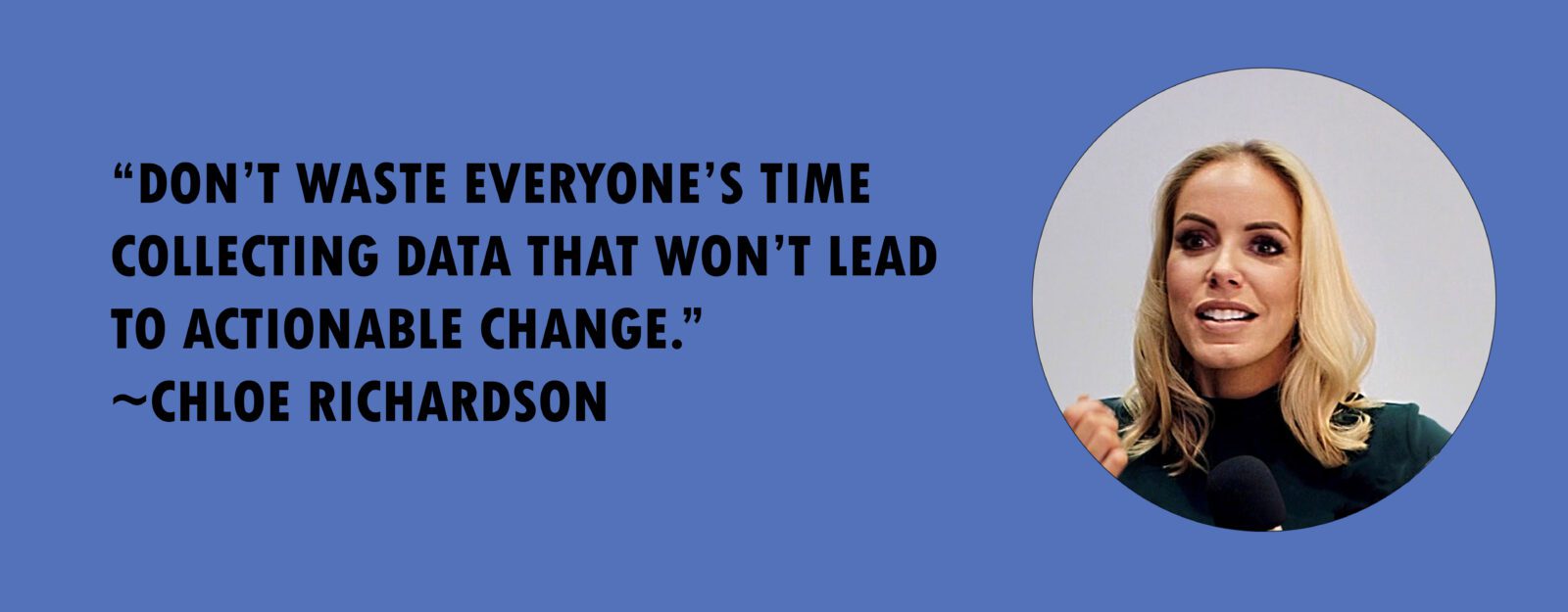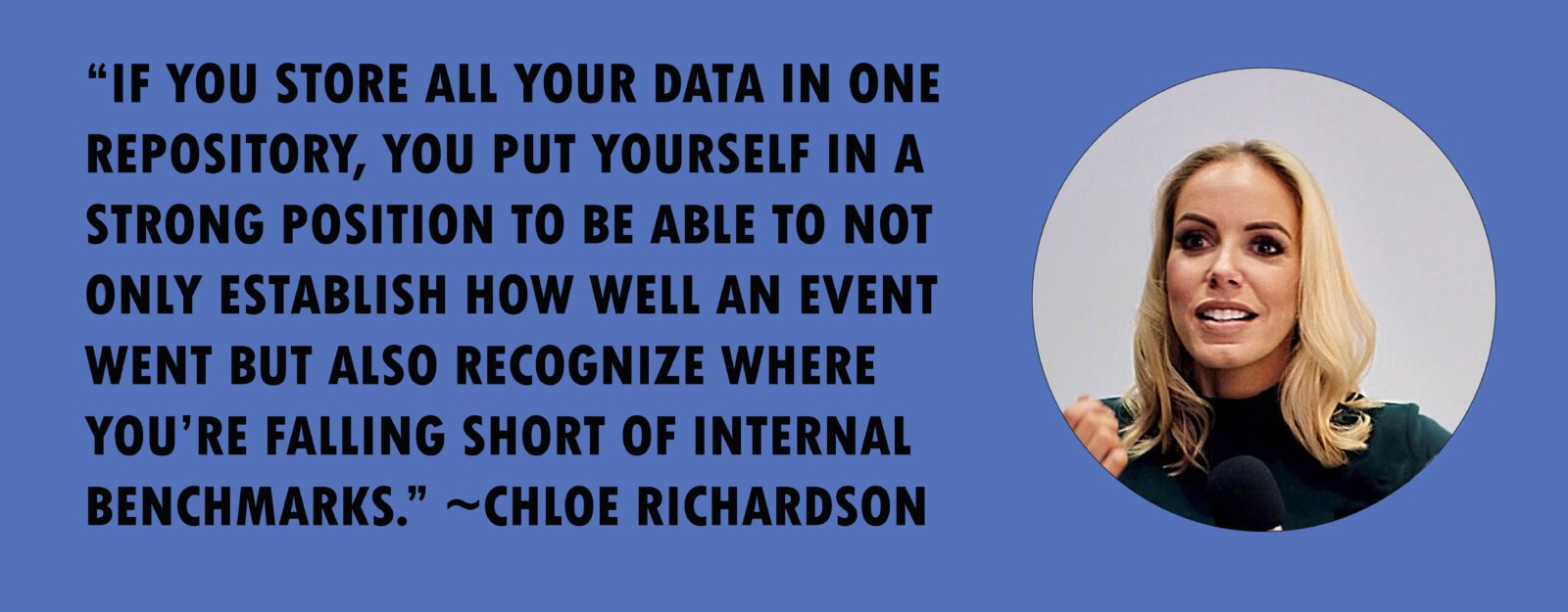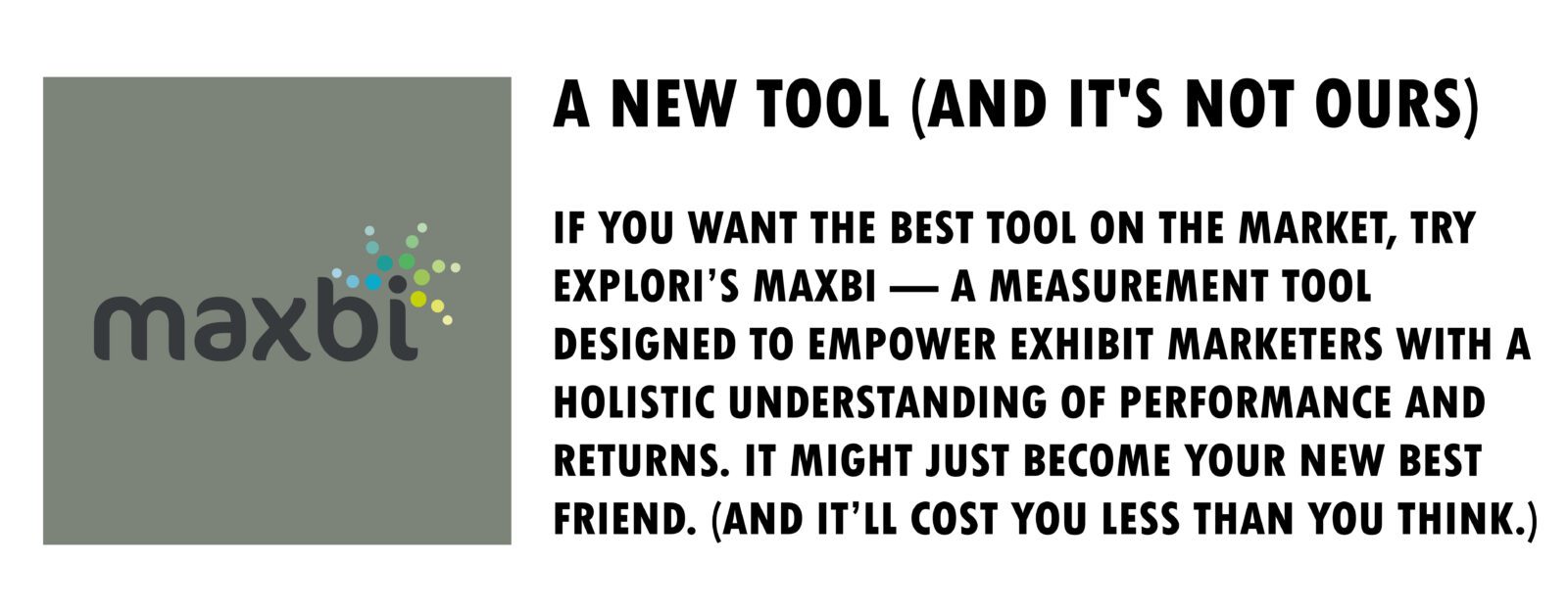We’re diving into trade show and events metrics, where numbers trump feelings. In this edition, we’re featuring insights from Chloe Richardson, SVP of Growth and Communications at Explori, a measurement company that helps event pros like you collect and analyze the metrics that matter most.
TL;DR (BUT YOU REALLY SHOULD READ IT!)
- Three reasons to track metrics. (Betcha you can guess at least two.)
- Where to start. (Pssst! You need to talk to sales.)
- The 7 Core Pillars of Measurement.
- Metrics you can ignore.
- Secrets to success: one place, one person, one dashboard.
- The newest measurement tool out there that might become your best friend. (And it’s not a spreadsheet.)

Why Measure?
You don’t want to be that person in the meeting who just says, “We did a great job, trust me!” when everyone’s asking for the numbers. Here’s why you need to measure up:
- Competing for Budget and Importance: You have to fight for budget allocation among other marketing channels within your company. If you don’t want to be the underdog fighting for scraps in the budget war, you need metrics.
- Defending Decision-Making: If you’ve ever had to justify a decision based on a “feeling,” you know it can be a tough sell. In an environment where every dollar counts, metrics help defend your decisions and justify event spending.
- Helping Your Program Spend Smarter: Who doesn’t want to stretch a dollar? By measuring what’s working and what’s not, you can make every cent count.

How to Start (or Revamp) Your Measurement Strategy
Starting or overhauling your measurement strategy can seem daunting, but it doesn’t have to be. Here are two places to begin:
- Include Management/C-Suite: Get the big bosses involved early. Set KPIs (Key Performance Indicators) together so everyone knows what success looks like. If you get the C-Suite to sign off on your exhibit mission, you put yourself in a strong position from the start.
- Align Sales and Marketing: We can hear the groans from here, but alignment with sales is key. And it’s where marketers fall short. Involve sales in setting objectives so they understand what they are responsible for during and after an event — after all, they’re probably pushing you to be at these events.


7 Core Data Pillars
Most exhibitors track leads, but that’s only one-seventh of what’s critical. Let’s dive into the seven metrics that Chloe says everyone should be collecting:
- Event Characteristics: Who’s coming to your event? How many decision-makers are there? Assess location, size, and attendee demographics. It’s tactical data but key for seeing your entire exhibit program holistically. You’ll be able to begin comparing events and judge which are worth keeping and which need to be cast aside.
- Exhibit Characteristics: What size is your booth? How many open sides does it have? Did you have a theater? How many demo areas are there? How much meeting space did you allocate? Evaluate its design and functionality. Again, tactical data that paints the picture.
- Event Experience and Sentiment: Talk to your team. Did they think the event was important to the rest of the business? How do they feel about the location and size of the booth? Were the attendees engaged? Survey attendees and find out if everyone left with a smile — or if they ran to the nearest exit. (We’ll save the topic of surveys for another newsletter. There’s a lot to chew on.)
- Budget Allocation: Most of you already track this, but it’s often stored in various locations. (More on that later.) Break it down! Get into the nitty-gritty with line items. Maybe a $35,000 booth spend performed better than a $90,000 space. You probably want to know that.
- Strategic Execution: How far in advance did you book your booth? Who did you invite to the exhibit? Did you hold staff trainings prior to the event to explain the booth and set expectations? Did you stick to the plan, or did it go off the rails? Track how well you implemented your event strategy.
- Strategic Objectives: ROO (Return on Objectives) is the new ROI — get with the program. How well did you meet your objectives? Chloe recommends splitting them into marketing, sales, and strategic goals.
- Leads/Meetings: Keep track of the number and quality of meetings and leads generated. You don’t want to meet a hundred people if none of them remembers you the next day. Enough said.
What You Don’t Need to Measure (Unless It Leads to Actionable Change)

Here’s what you can skip unless you have a good reason to include it:
- Demographics (Age/Gender): Let’s face it, you’re probably not going to completely redesign your entire exhibit just because 60% of your target audience happens to be either male or female. Save your energy for things that matter.
- Facial Recognition: Tracking people’s expressions throughout a booth is becoming a more popular metric — but what does it really tell you? A frown could mean they’re upset, or it could just be indigestion. Too many factors to consider, so let’s not overthink it.
How to Succeed

To succeed with metrics, consider these best practices:
- One Repository: Keep all your data in one place, because chasing spreadsheets around is nobody’s idea of fun.
- One Gatekeeper: Assign a data wrangler to keep things organized. You don’t want multiple cooks in this kitchen.
- Standardize Your Dashboard: Track the same metrics across all your shows to maximize accuracy and reliability. A dashboard is like a good playlist — if it’s all over the place, you’ll never know what’s playing.
- Include All Events: Consistency is key. If you’re only measuring your top-tier events, you’re missing out on valuable insights from smaller ones. If you have 90 tabletops in a year, that adds up to a lot of time and money.
- Set Clear Definitions: Make sure everyone is singing from the same hymn sheet. Define key terms like “cold,” “warm,” and “hot” leads. Trust me, you don’t want your sales team confusing cold leads with cold pizza.


Wrapping It Up
If you take away one thing from this newsletter, it’s this: Metrics matter. They’re not just numbers on a spreadsheet — they’re the key to unlocking bigger budgets, making smarter decisions, and ultimately, running successful events that keep attendees coming back for more.
Stay smart, stay data-driven, and most importantly, stay awesome!



